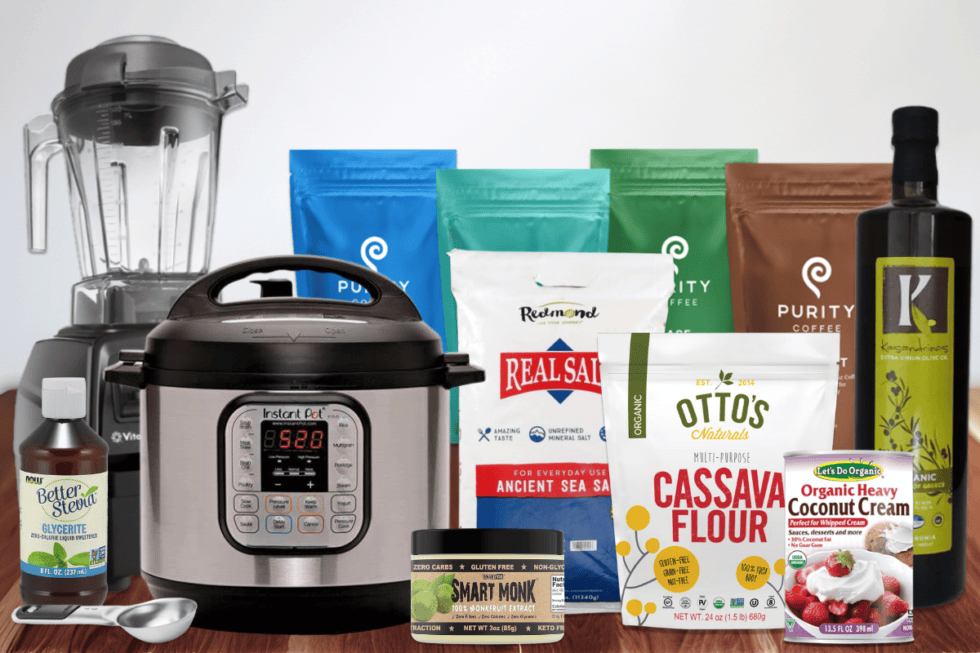
The Mast Cell 360 Guide to Our Favorite Kitchen Staples and Top Low Histamine Food Tips
We’ve loved providing you with low histamine food recipes over the past several years.
Our recipes are designed to help you lower histamine content in your diet.
Most of our recipes are also:
- Low to medium oxalate
- Low lectin
- Gluten free
- Dairy free
As we started planning recipes for the year, we took a moment to look back and ask some questions.
- What were our most flavorful creations?
- Where could we improve?
- What would make cooking easier for you?
That last question really struck us. Cooking with MCAS can be a challenge.
Maybe you are new to the low histamine diet. Or maybe you’ve been adjusting your lifestyle to reduce mast cell triggers.
We want to give you some starting points and tips to make cooking low histamine easier.
So, we’ve combed our archives to compile this go-to guide for you.
Here’s what you’ll find in this post to help set up your MCAS kitchen – you can also click on any of these to go directly to that section:
- Low Histamine Pantry Staples
- Low Histamine Freezer Staples
- Choosing Low Histamine Produce
- The MC360 Method for Reducing Mold in Nuts
- How to Make Flax Eggs
- Food Storage Tips
- Our Guide to Low Histamine Thawing
You’ll get some of our top food tips (including reducing oxalates in foods!) and answers to our most FAQs about our recommended products, too!
Plus, you’ll get links and coupon codes to help you get started.
So…where do you start?
How Do I Stock a Low Histamine Foods Kitchen?
It’s important you know that this blog post is for informational and educational purposes. It’s not meant to treat any health condition or to be prescriptive for anyone. If you have any medical condition, it is critical you work under the care and guidance of a licensed medical provider.
Has your healthcare provider suggested a low histamine diet to help you reduce symptoms of Histamine Intolerance?
But are you still having trouble getting started?
Having staples on hand makes low histamine cooking and meal prep easier.
Here are some of our top tips and recommendations for revamping your staples.
Getting Started
Our low histamine food list will help you get an idea of common low histamine foods and common high histamine foods.
As you review the list, you may find that you need to make some substitutions to your kitchen staples.
We consider staples to be the ingredients you’ll use most frequently. You’ll get multiple uses out of a bag of cassava flour or a bottle of olive oil, for example.
Building your staples doesn’t have to be done all at once.
Start with ingredients you think you’ll use most.
We’ve listed our recommendations in the pantry and freezer section in the order we think each product usually gets the most use.
The fridge section is primarily produce, so we’ve just listed our most used in alphabetical order.
We hope this will be helpful for you if you are building your staples little by little.
Be sure to take advantage of our coupons and savings codes!
Low Histamine Pantry Staples
The biggest overhaul you’ll probably make is to your pantry staples.
Do you have commercially prepared and processed foods in your pantry?
If so, you’ve probably got some high histamine items. Or foods that have mast cell triggers like additives and preservatives.
Examples include:
- Wheat based pasta
- Prepared foods (salad dressing, jam, cake mixes, ketchup)
- Cane sugar
- Bleached whole wheat flour
- Peanuts
- Spices like cinnamon or paprika
But don’t worry. You’ve got options.
Here are some of our favorite pantry staples for baking and general cooking.
In this section, you’ll also get:
- The truth about olive oil and histamine
- A step-by-step guide to reduce mold and oxalates in nuts
- The answer to the top FAQ about oxalates and cassava flour
Purchase Your Favorites Easily with These Links
- Redmond Real Salt – Use code MASTCELL360 for 15% off
- Kasandrinos Olive Oil – Use code MASTCELL360 for 20% off
- Ghee
- Coconut oil
- Toasted sesame oil
- Coconut cream
- Pecans
- Macadamia nuts
- Flax seed
- Otto’s Cassava flour – Use code MASTCELL360 for 10% off
- Monk fruit powder
- Monk fruit drops
- Stevia – alcohol free
- Vanilla powder
- Cardamom
- Miracle Noodles
- Purity Coffee – Use code MASTCELL360 for 20% off your first order
- Teas – assorted, see the list below
Redmond Real Salt
Salt is one of our top starter pantry staples.
Redmond Real Salt is our favorite. It’s cleaner than some of the other salts out there. Some salts are full of impurities, including microplastics!
If you get a big bag, put what you’ll use right away in your salt shaker. Store the rest in an airtight glass container. Refill as needed.
>>> Click and use coupon code MASTCELL360 for 15% off Redmond Real Salt
Fats and Oils
Oil helps food cook faster and more evenly. It helps keep food from sticking to the pan. And it imparts flavor.
Fats are a pantry staple you’ll use over and over.
Stock your pantry with these flavorful and versatile options.
- Kasandrinos Olive Oil
- Ghee
- Dr. Bronner’s Coconut Oil
- Toasted Sesame Oil
Of all the cooking oils we’ve recommended, we’ve received the most questions about olive oil and histamine.
Here’s the low down on histamine and cooking with olive oil.
Dr. Janice Joneja, dietitian and clinical researcher, explained that consuming olive oil can initially increase histamine. But later, it triggers the release of the histamine lowering enzyme, DAO (diamine oxidase).
Kasandrinos’s olive oil is a favorite among the Mast Cell 360 staff. Many of you have written saying how much you love it, too.
It’s smooth and tasty. And you won’t find any filler oils in it.
Related Article: Olive Oil – Avoiding the Frauds and Finding the Truth
Did you know that a good quality, extra virgin, low acidity olive oil like Kasandrinos can have a smoke point as high as 405°F?
So, yes, you can cook with Kasandrinos.
And it makes a great finishing oil for added flavor.
>>> Click here and use code MASTCELL360 for 20% off your Kasandrino’s Olive Oil purchase
Our next recommendation for a pantry staple is a dairy replacement.
Coconut Cream and Coconut Milk
We use coconut milk or coconut cream in everything from smoothies to sauces to dressings to desserts.
This is another low histamine pantry top pick.
Many dairy products are low histamine.
But you might have issues with casein and lactose.
Coconut milk is our go-to ingredient to use in place of cow’s milk.
It’s also a good choice for those with Oxalate Intolerance. It’s lower oxalate than almond milk or oat milk.
Make sure to choose one without additives and preservatives.
We like the coconut milk from Native Forest.
And we like the coconut cream from Let’s Do Organic.
This Low Histamine Dip with Roasted Garlic and Pecans is one of our favorite snacks using coconut cream as the base.
Next, let’s look at the versatility of nuts and seeds.
Nuts and Seeds
The following aren’t the only low histamine nuts and seeds you can choose from.
But these are the ones we use most in our recipes.
Keep reading to get the step-by-step guide for reducing mold in nuts.
Nuts are a versatile ingredient and a tasty quick snack on their own.
Nuts in a recipe:
- Add protein
- Add omega 3s
- Add creaminess
- Add flavor
- Act as a flour when ground
- Act as a crunchy component to a dish
Several of our recipes call for:
Start your staples with those.
Later you can add things like:
- Baruka nuts (technically a seed, low FODMAP)
- Tiger nuts (technically a tuber, low FODMAP)
Here’s what to know about mold and oxalates when it comes to nuts (and legumes).
Did you know that soaking pecans in alkaline water can help reduce mold toxins?
Soaking also helps reduce oxalates. And cooking can reduce oxalates AND lectins.
Pressure cooking is a good option for dried legumes like beans and lentils. The cook time is less which means that histamine won’t build as much.
We like the Instant Pot for pressure cooking.
As promised, here’s our step-by-step guide to soaking and drying nuts to reduce mold toxins.
The MC360 Method for Reducing Mold Toxins in Nuts
Here are the instructions we use for soaking nuts:
- Buy the freshest raw nuts available from trusted sources.
- Sort the nuts, discarding any that look shriveled, discolored, or moldy.
- Place the remaining good nuts into a large non-metal bowl.
- Cover nuts with filtered water.
- Add ¼ teaspoon baking soda to 2 cups of water used to cover the nuts.
- Cover the bowl with a large plate or lid.
- Move the bowl of nuts to the fridge and let the nuts soak for 12 to 24 hours.
- Strain the nuts then rinse well with filtered water.
- Dry in the oven on low heat (about 225 degrees F) until dry and crispy.
- Store in an air-tight container in the fridge.
Dry times will vary per oven.
In a recent test, we used a countertop convection oven at 225 degrees F for 60 to 70 minutes.
Convection ovens usually cook about 25% faster than your standard oven, so just watch yours and take them out when they are crispy but not burned.
Related Article: Low Histamine Pecan Clusters Recipe
Next, get a coupon code for one of our favorite baking staples – Otto’s cassava flour.
And learn more about the oxalate levels in cassava flour.
Cassava Flour and Oxalate FAQ
Do you love baked goods? What about tacos?
Instead of using a wheat or corn base, try cassava flour.
Our favorite is Otto’s Cassava Flour.
Otto’s cassava flour is:
- Low histamine
- Low lectin
- Medium to high oxalate
- Not fermented
- Low carb
- Dairy free
- Gluten free
- Nut free
- Soy free
- AIP friendly
And it’s easy to use.
Otto’s suggests substituting wheat flour with cassava flour at a 1: 1 ratio if you measure by weight.
If you measure by cups, reduce flour volume by 25%.
For example, if the recipe calls for 1 cup of wheat flour, use ¾ cup of Otto’s cassava flour.
Is cassava flour right for you?
Here’s the answer to the top FAQ about Otto’s cassava flour and Oxalate Intolerance. Is Otto’s cassava flour high oxalate?
Otto’s is lower in oxalates than other cassava flours we’ve tried. But it’s still considered medium to high oxalate. It depends on how much you eat.
When tested, it registered high oxalate at 17mg soluble oxalates per ¼ cup.
But let’s look at how that would break down for a recipe. Remember, you’re looking at per serving, not the entire amount used.
For example, a recipe that calls for 1 cup of flour total and serves 4 would be high oxalate. That’s because each serving would have ¼ cup of flour.
But a recipe that uses 1 cup of flour and serves 8 would be 1/8 cup per serving. That’s considered medium oxalate.
If you can tolerate some oxalates, cassava flour is a better choice than almond flour.
But even small amounts of oxalates may cause reactions for you if you have severe oxalate issues or aren’t tolerating many foods in general.
Another factor to consider before trying cassava flour is a latex allergy.
Cassava can potentially cause reactions if you are allergic to latex.
This is because they share similarly structured proteins to latex. The body can mistakenly recognize these proteins as latex causing reactions.
But many on our staff and many of our clients have enjoyed using Otto’s cassava flour. It’s allowed us more variety in our choices, including baked goods and low histamine tacos!
Want to give Otto’s cassava flour a try? Use our coupon code: MASTCELL360
>>> Click here to use code MASTCELL360 for 10% off your Otto’s Cassava Flour
Another ingredient we use in baking is flax seed.
Read on to learn how to replace chicken eggs with flax seed eggs…and when you shouldn’t use flax eggs!
Flax Seed and Making Flax Seed Eggs
Eggs are low histamine.
However, our experience is that some people with food sensitivities don’t tolerate eggs.
If you’re just starting to figure out your intolerances, we suggest running the Egg Zoomer test.
We do use chicken eggs in our recipes from time to time. They are a good source of protein. And they are low histamine, low oxalate, low lectin, and even low FODMAP and low salicylate.
Eggs serve the purpose of:
- Providing structure and stability by serving as a binder
- Adding moisture and richness
- Acting as a leavening (rising agent)
But if you aren’t tolerating eggs, here’s an option to use for baking – the flax egg.
Making Flax Eggs
- Start with whole flax seed.
- In a spice grinder or small blender, pulse until the seed becomes a course flour. (A large food processor doesn’t work as well for this.)
- Add 1 Tablespoon of flax meal to 3 Tablespoons of warm water.
- Set aside for five minutes until thick.
This yields the equivalent of one chicken egg.
Note: Flax eggs are for adding to mixtures that call for eggs, like batter or breading. You can’t make an omelet with flax eggs.
Many sources say it’s best to limit flax egg replacement to 1 or 2 eggs.
If the recipe calls for more, texture and taste will be compromised by using flax eggs instead of chicken eggs.
Next up, sweeteners.
Monk Fruit Powder and Stevia
Increases in blood sugar can cause inflammation, mast cell reactivity, and raise histamine levels.
Consider Smart Monk Monk Fruit Powder or Organic Stevia for your sweetener of choice.
These sweeteners don’t raise your blood sugar levels.
We highly recommend Smart Monk Monk Fruit Powder. You can use drops, too.
Other brands we’ve tasted have a bad aftertaste.
One jar of Smart Monk Monk Fruit Powder will last a long time. It comes with a 1/32 teaspoon measuring spoon. A little goes a long way.
For Stevia, here’s what to know.
Some stevia drops contain alcohol. This may cause issues if you are very sensitive.
Sensitive people may do better with an alcohol free stevia like this one:
Next let’s look at some items you may not use as frequently but will still get multiple uses out of.
Raw Vanilla Bean Powder
We’ve used vanilla in everything from low histamine baruka nut vanilla mousse to low histamine apple pie smoothie recipes.
The alcohol and fermentation in vanilla extract can cause reactions for those who are sensitive and still in phase 1 of the low histamine diet.
We prefer raw vanilla bean powder to keep recipes lower histamine. And we actually prefer the taste of the bean powder over extract, too.
>>> Click here to buy vanilla bean powder
Cardamom
Cardamom is a spice used in a lot of Indian and Middle Eastern dishes.
We love it for dishes inspired by those cuisines.
It also makes a good alternative for high histamine spices like cinnamon and nutmeg.
We use cardamom to give our recipes the zing and warmth you’d associate with boldly flavored entrees or comforting autumn beverages.
>>> Click here to buy cardamom and other spices
Miracle Noodles
Love a good noodle dish?
Miracle Noodles may be the pantry staple you’ve been looking for.
Miracle Noodles are made of konnyaku flour. You may also see these called shirataki noodles.
Miracle Noodles are a good neutral base you can use in a variety of noodle dishes.
Related Article: Low Histamine Chicken and Veggie Pad Thai
For pre-packaged food, Miracle Noodles are pretty clean.
The brand we like is Organic Shirataki Miracle Noodle. It has only 3 ingredients.
>>> Click to shop for Miracle Noodles
Next, we round out our pantry staples with some coupon codes for some fun extras.
These may not be staples, but if you’re like us, you enjoy a good cup of coffee or tea!
Coffee
Coffee can be a lower histamine beverage.
However, some people have reactions from coffee due to toxins like:
- Mold
- Polycyclic Aromatic Hydrocarbons (PAHs)
- Acrylamide
- Pesticide residue
Related Article: Low Histamine Coffee for MCAS (Also Mold Free Coffee)
But we found a clean, low histamine coffee.
The coffee we recommend is Purity coffee.
Purity coffee is:
- Mold free
- Low histamine
- Low FODMAP
- Low oxalate
- Low lectin
- Low acid
- Organic
- Decaf (99% decaf!) is low salicylate
- Rich in antioxidants
And Purity uses a smokeless roasting process. This reduces acrylamide levels and the development of PAHs, both of which can be mast cell triggers.
Purity offers a variety of coffee, both caffeinated and decaf.
Some people react to caffeine. So, if you’ve been having problems with coffee or are in the beginning stages of your healing, we’d recommend starting with the decaf blend called Calm.
>>> Click to get 20% off your first order of Purity Coffee with code MASTCELL360
Herbal Teas
All black, green, white, rooibos tea are higher histamine.
But many herbal teas are fine.
Our favorites come from Kauai Farmacy.
Related Article: Benefits of Tulsi and Other Fresh Herbs
We love that Kauai Farmacy uses regenerative organic farming practices.
And we appreciate that the herbs are hand-picked frequently and in small batches. This helps ensure that the herbs are always the freshest possible.
The fresher the herb, the lower the histamine levels will be. AND the more potent the herbs will be!
That makes a difference in flavor. It also means you’ll get more of the health benefits herbs have to offer.
Everything from Kauai Farmacy is packaged within weeks of harvest.
Use our coupon code to get a discount on our curated list of their products.
>>> Click here for 15% Off Kauai Farmacy with code MASTCELL360
We also like Starwest Botanicals. They have a nice selection of organic herbs and tea blends.
Now you know about some dry goods to start your low histamine foods pantry.
Next, explore the top freezer staples, including low histamine meats.
Freezer Staples
If you are stocking little by little here’s where we’d start.
- A couple of low histamine proteins like chicken and wild Alaskan salmon
- Homemade meat or veggie broths like
- Frozen fruit like mango and tart cherries
- Homemade Otto’s cassava tortillas
Adjust that list to your own tastes and tolerances.
Keep reading this section for more on:
- Food storage tips
- Choosing low histamine meat and seafood
- Thawing tips
First, here’s more on freezing prepared recipes like meat broth or tortillas.
Freezing Food You’ve Made
Freezing food is a great way to help keep histamine levels lower! Storing foods or leftovers in the fridge can raise histamine levels significantly, especially for things like meat. So, you want to freeze leftovers right away and also freeze whatever else makes sense—like meat.
Plus, having broths and “bread” on hand can be helpful when it comes to making a few of our recipes.
For example, when we have a new soup recipe for you, you won’t have to make the stock. You can use your frozen broth and hit the ground running.
And crackers and tortillas are handy anytime for breading, a snack, wraps, tacos, and more.
Here are our top recipes to keep as freezer staples.
When you have time and energy, make a big batch to freeze.
Actually, you can do this with any recipe. Make extra and freeze your leftovers to eat throughout the week.
A lot of people like the idea of “cook once, eat often”. It’s particularly useful if your energy levels fluctuate due to MCAS.
Here are our tips for freezing foods you’ve made.
Freezing Food Tips
There are two main considerations to freezing food.
One is making sure you get the food in the freezer right away. If it sits on your counter, it will build in bacteria and histamine.
Most freezers nowadays are equipped to handle something right from the stovetop.
Just leave a little room between the top of the dish and the lid to allow for expansion.
Secondly, choose non-toxic storage.
We like glass bowls with lids or silicone containers like the ones from Stasher.
Stasher also makes portioned trays (like covered ice cube trays, but bigger) which are ideal for defrosting one portion of broth at a time.
TIP: Put a note on your containers indicating what the contents are, when you froze it, and any defrosting notes.
Next, let’s get back to stocking up on low histamine meats and seafood.
Frozen Low Histamine Meat
You might be surprised that we suggest these frozen protein options over fresh meat.
Why is that?
The “fresh meat” in your grocery store may be higher histamine due to factors like:
- Time it’s been sitting (including transport and in the store)
- Storage temperature
- Oxygen exposure
All of these things can factor into bacteria growth, and thus, higher histamine levels.
Freezing helps reduce the growth of bacteria that release histamine.
You can learn more about why choosing pasture raised meats that are frozen immediately after processing may be beneficial in our article The Best Low Histamine Meat and Seafood Options.
Shop For Your Favorite Low Histamine Meats with These Links
- Northstar Bison low histamine meats
- Use code MASTCELL360 for 10% off at Northstar Bison
- White Oak Pastures low histamine meats
- Use code MASTCELL360 for 10% off your first order at White Oak Pastures
- Vital Choice low histamine seafood
These companies offer a variety of products.
Now, not every product these companies offer is low histamine.
Generally, here’s what to limit or avoid:
- Aged meats
- Ground meats (although we have done ok with Northstar Bison’s ground meats)
- Jerky
- Anything with high histamine spices (some sausages, for example)
- Anything fermented like pepperoni or salami
- Anything smoked
- Anything canned (sardines)
Here are a few of our low histamine favorites.
From Northstar Bison we love:
- Chicken
- Turkey
- Salmon
- Halibut
- Unaged Bison
- Elk
- Rabbit
- Lamb
From White Oak Pastures we love:
- Unaged beef options
- Chicken (corn and soy free options!)
- Turkey
- Lamb
- Duck
- Pork
From Vital Choice we love:
- Salmon, (King Salmon)
- Cod, (Alaskan, Pacific Lingcod)
- Petrale Sole
- Mahi Mahi
- Haddock
- Chilean Sea Bass
- Scallops (Wild Atlantic, Wild Petit Patagonia, Wild Alaskan)
- Lobster
- Albacore Tuna
Now that you’ve got your freezer stocked, you’ll want to know the best way to thaw.
Low Histamine Thawing Tips
Below you’ll find our top suggestions for thawing.
But first, here’s one thawing method that will raise the amount of histamine in your food. You’ll want to stay clear of this option!
DO NOT thaw meat at room temperature on your kitchen counter.
It may seem convenient to leave tonight’s chicken on the counter while you run some errands. But bacteria in meat can grow rapidly in temperatures as low as 40 degrees F.
These bacteria can lead to mast cell responses and increased histamine levels.
Related Article: What Are Mast Cells? Mast Cell Activation Syndrome 101
Here are better options for keeping levels of histamine lower when thawing.
No Thawing – Cook from Frozen
You can cook meat from its frozen state!
This is one way to keep histamine levels low when it comes to cooking meat.
We suggest cooking larger portions of frozen meat, like pork roast, in an Instant Pot.
You can even cook some meats like boneless, skinless chicken breasts from frozen, too.
We’ve successfully cooked frozen chicken breasts on the stovetop by placing the breasts in a covered skillet and cooking over medium to medium high heat for about 10 minutes on each side (20 minutes total).
Water Bath Thawing
This method works well for smaller cuts of meat.
This method should only be used for sealed meat. Don’t put raw, exposed meat directly into a water bath.
Start with a bowl of tepid water.
Don’t use hot water for your water bath. The meat will start to cook if you do.
Your bowl should be big enough that the sealed meat will be completely submerged in the water.
You may need to weigh the meat down by placing a heavy object on top.
Keep meat submerged for about 15 to 20 minutes total.
TIP: Replace your water after ten minutes. The frozen food will lower the temperature of the water. Replacing the water will help speed up the process. (You can water your plants with the water.)
You can soak the frozen meat in cool water from the start. Just count on additional thaw time.
Microwave Thawing
With water bath thawing, you want to keep any plastic packaging on.
But be sure to remove any plastic wrap if you use the microwave to thaw.
Microwave thawing can be good for meat and leftovers.
Many microwaves have a preset thaw or defrost button. This is a good place to start.
Consult your microwave guide or online resources for suggested times.
With leftovers, you can heat them up in the microwave until they are ready to eat. We don’t recommend this with meat, though.
We suggest using the microwave for defrosting meat only, not cooking. Defrost until ever so slightly frosty. Then cook according to the recipe.
The microwave may not be an option if you are sensitive to EMFs, though.
But in some instances, people with EMF sensitivity have reported being ok if they leave the room while the microwave is running.
Stovetop Thawing
You can use your stovetop to thaw broths, tortillas, and leftovers.
We don’t use this method for thawing meat. If we’ve used the stovetop for frozen meat, we’ve done this as a “cook from frozen” method, rather than a thaw.
Each food and oven will vary on the amount of heat and time needed.
Refrigerator Thawing
Longer thaw times result in higher histamine levels.
Thawing food in the fridge requires anywhere from a few hours to a full day. So, it isn’t ideal.
Stick with one of the quicker thaw methods mentioned above if you’re super sensitive.
That rounds out our section on freezer staples and thawing.
Finally, we’ll look at refrigerator staples. Plus, get tips on choosing the freshest produce.
Fresh Produce
In the section about freezer staples, you read that we like keeping frozen mango and tart cherries on hand in the freezer.
That’s because sometimes, like in the case of mango and tart cherries, we find that getting them frozen is extremely time saving. And sometimes the only way we can find them!
With frozen fruit, you don’t have to worry about peeling and pitting.
And we use these in recipes like our cherry smoothie and mango ice cream. So, the frozen aspect actually enhances recipes like that.
But when it comes to produce, we generally suggest fresh vegetables and fresh fruits.
Fresh and frozen produce will have the lowest histamine levels.
Canned and dried fruits and vegetables will be higher histamine. Additionally, they may have additives and preservatives.
And commercially canned veggies don’t taste as good, in our opinion.
Here’s what we would consider our top used fresh produce.
But don’t limit yourself to these. Remember, this is just a starter guide to building your kitchen staples.
You’re always encouraged to add a variety of low histamine foods to your diet, too!
Cheat Sheet: Low Histamine Foods List
Fruit
- Apples
- Blueberries
- Cherries
- Mango
Root Veggies
- Carrots (medium oxalate at ½ cup boiled)
- Celery
- Garlic
- Ginger
- Onion
- Radishes
- Rutabaga
Other Veggies
- Arugula
- Broccoli
- Cabbage
- Cauliflower
- Lettuce varieties
Fresh Herbs
- Basil
- Chives
- Cilantro
- Oregano
- Parsley
- Rosemary
- Thyme
Here’s what to know about choosing fresh produce to make sure you’ll get the lowest histamine levels.
Choosing Fresh Produce
Fresh vegetables and fruits can increase in histamine content as they age.
Here are our tips for choosing lower histamine fresh produce.
- Check for appropriate firmness (too soft can indicate it’s old)
- Avoid brown spots or bruising
- Anything with green leaves should not be wilted, slimy, or brown
- Carrots with green tops tend to be fresher
- Avoid pre-cut fresh produce (higher histamine due to greater surface area for bacteria to grow)
- Aim to get organic when it comes to produce notorious for pesticide residue (our low histamine foods list indicates what you should get organic)
We hope this go-to guide will be a helpful resource!
Be sure to bookmark the page so you can come back anytime and find your favorite tips and links to your favorite low histamine foods!
What are your go-to low histamine foods?
What to Read Next
- Meat Handling Tips: Preparation, Cooking, and Storage
- Low Histamine Diet Plan for Mast Cell Activation Syndrome
- Low Histamine Meal Planning
- 9 Low Histamine Snack Ideas
- Oxalates and MCAS
- Lectins and MCAS
- FODMAPS and MCAS
- Salicylates and MCAS
Some links in this website are affiliate links, which means Mast Cell 360 may make a very small commission if you purchase through the link. It never costs you any more to purchase through the links, and we try to find the best deals we can. We only recommend products that we love and use personally or use in the Mast Cell 360 practice. Any commissions help support the newsletter, website, and ongoing research so Mast Cell 360 can continue to offer you free tips, recipes, and info. Thank you for your support!
References
Exon J. H. (2006). A review of the toxicology of acrylamide. Journal of Toxicology and Environmental Health. Part B, Critical Reviews, 9(5), 397–412. https://doi.org/10.1080/10937400600681430
Ibero, M., Castillo, M. J., & Pineda, F. (2007). Allergy to cassava: a new allergenic food with cross-reactivity to latex. Journal of investigational allergology & clinical immunology, 17(6), 409–412.
Joneja, J. (2018). Olive oil and histamine. Histamine-sensitivity.com website. Retrieved from: https://www.histamine-sensitivity.com/olive-oil-and-histamine-11-18.html
Shi, L., Arntfield, S. D., & Nickerson, M. (2018). Changes in levels of phytic acid, lectins and oxalates during soaking and cooking of Canadian pulses. Food Research International, 107, 660–668. https://doi.org/10.1016/j.foodres.2018.02.056
Theoharides, T. C., Tsilioni, I., & Ren, H. (2019). Recent advances in our understanding of mast cell activation – or should it be mast cell mediator disorders?. Expert Review of Clinical Immunology, 15(6), 639–656. https://doi.org/10.1080/1744666X.2019.1596800
TMS – The Mast Cell Disease Society, Inc. (2022, September 21). Nutrition – TMS – The Mast Cell Disease Society, Inc. TMS – the Mast Cell Disease Society, Inc. https://tmsforacure.org/nutrition/
Yu, Y., Jin, H., & Lu, Q. (2022). Effect of polycyclic aromatic hydrocarbons on immunity. Journal of Translational Autoimmunity, 5, 100177. https://doi.org/10.1016/j.jtauto.2022.100177


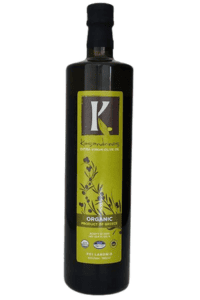


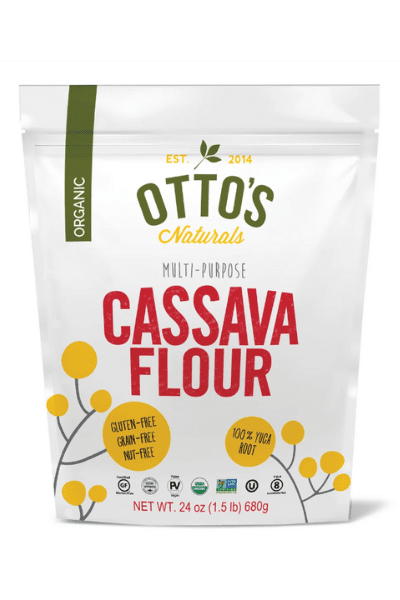





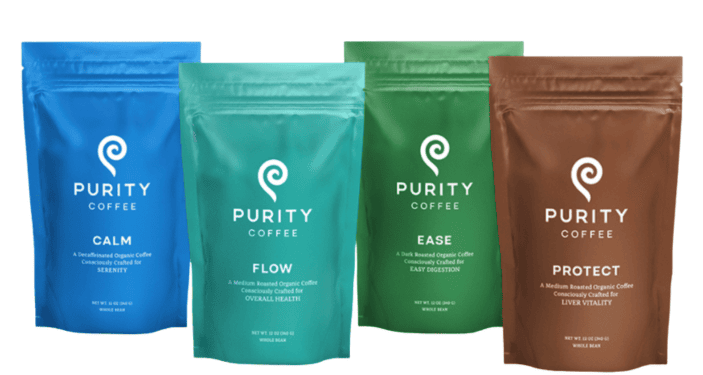
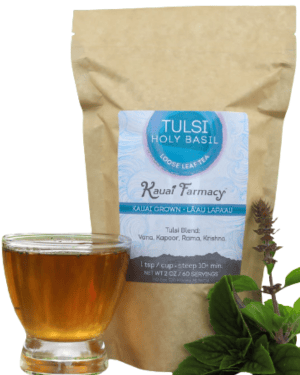



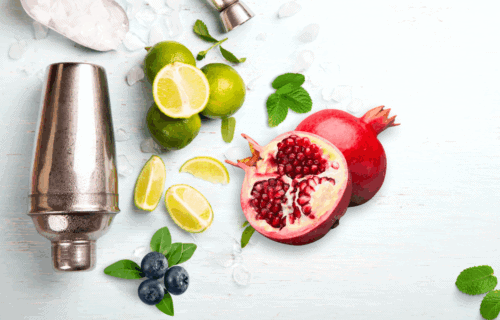
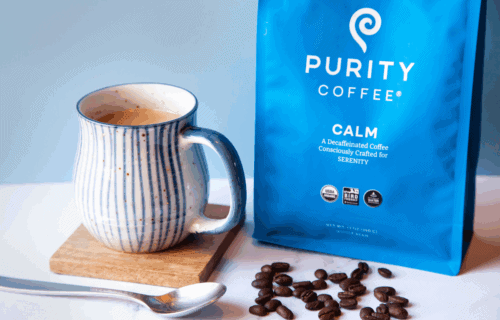
What about cooking frozen chicken breast in a glass air fryer and using vacuum sealed freezer bags for stuff and vacuum sealed jars?
Hi Alyx,
Yes, that would work!
Best,
Zack
What about frozen vegetables as opposed to fresh? I didn’t see that mentioned.
Hi Michelle,
Thanks for your question.
Freezing vegetables or buying frozen vegetables is also low histamine. Just keep in mind to look at the ingredients when you are buying frozen vegetables to make sure if there are added ingredients that they are not high in histamine.
Best,
Zack
I am looking for a stand up home freezer that would flash freeze for batch cooking. Are there any recommendations that are not commercial freezers? I find it hard to organize my small chest freezer.
Hi Corrine,
Thanks for your question! This is something our team has not vetted ourselves, so we don’t have a specific recommendation at this time. However, Home Depot or Lowe’s may have options.
Best,
Zack